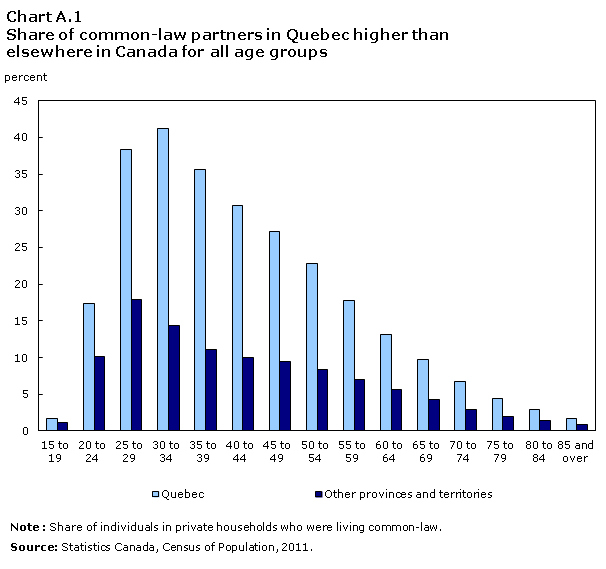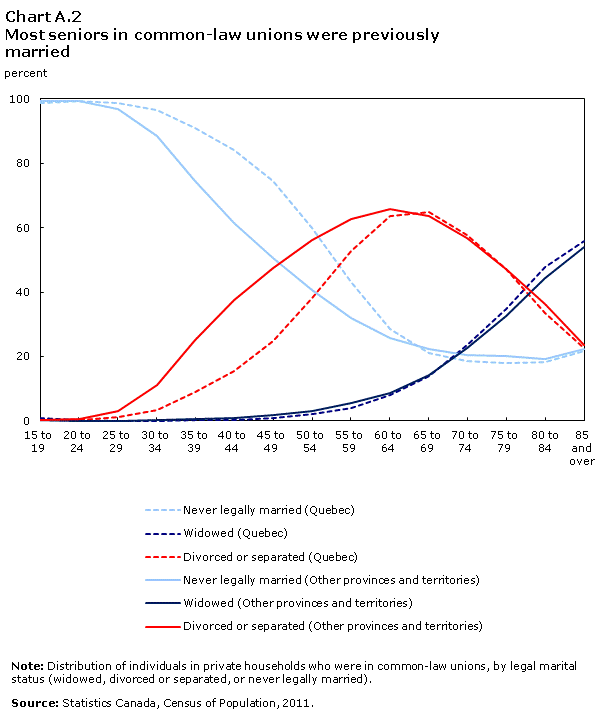Larger share of common-law partners in Quebec
Archived Content
Information identified as archived is provided for reference, research or recordkeeping purposes. It is not subject to the Government of Canada Web Standards and has not been altered or updated since it was archived. Please "contact us" to request a format other than those available.
Of the nation's 4.6 million seniors aged 65 and over, about 166,000 lived in a common-law union in 2011. While 25% of the senior population in Canada lived in Quebec, this province accounted for 44% of all senior common-law partners in the country. Among seniors in 2011, the share of the population living common-law was 6% in Quebec, compared with 3% for the remaining provinces and the territories, while for future seniors, these shares were 16% and 6%, respectively.
For both Quebec and the other provinces and the territories, the proportions of the population that live common-law are highest among young adults in their late twenties and early thirties and subsequently decrease with age (Chart A.1). In all age groups, however, the proportion is larger in Quebec than elsewhere in Canada.

With regard to the legal marital status of common-law partners, there is little difference in the current generation of seniors inside and outside Quebec (Chart A.2). In Quebec, as in the rest of the country, the overall pattern by age is that the youngest common-law partners were most often never married—this gradually declined with rising age as the proportion of persons who were divorced or separated increased. The difference between Quebec and the rest of the country is evident, however, in the magnitude of the trends for those under the age of 65. The proportion of common-law partners who had never been legally married was larger in Quebec in 2011 than in the other provinces and the territories.

Correspondingly, the proportion of common-law partners in Quebec under age 65 who were divorced or separated was lower than elsewhere in the country. The largest proportional differences in both categories were at age 45 to 49: 74% of common-law partners in Quebec had never been legally married, compared with 51% in the rest of Canada. In contrast, about 25% of common-law partners in their late forties in Quebec had been divorced or separated, compared with 47% elsewhere in the nation. Patterns of legal marital status for younger generations reflect different trajectories in union formation. To the extent that these younger common-law partners grow older and remain in—or form new—common-law unions, patterns by legal marital status are likely to evolve differently in Quebec than elsewhere in the country for future generations of seniors.
- Date modified:
